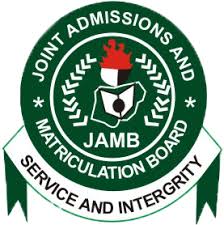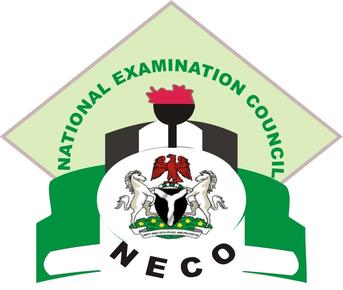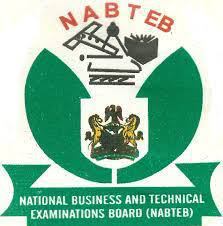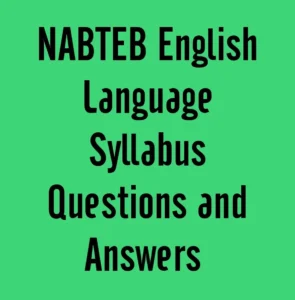NABTEB English Language Syllabus Questions and answers 2024
1. AimsThe English Language curriculum structurally has the following components, namely:
Grammar, Orals, Comprehension and Summary Writing, Correspondence, Essay and Report Writing. The purpose of this course is to ensure that candidates:
(a) Communicate effectively in written and spoken forms;
(b) Construct simple and correct sentences;
(c) Read with understanding;
(d) Interpret and record technical knowledge and information in accordance with the
registers for the various trades;
(e) Express themselves correctly and develop a range of thoughts and ideas on current topical issues; and
(f) Recognize implied meanings, tones, attitudes and use an acceptable pronunciation that can be, comprehended by others. It is also to serve as a foundation for post-secondary technical education.
2. Examination Scheme
Candidates are expected to take three papers: 001-1 and 001-2 are to be taken together. i.e.
Objective, Essay, Comprehension and Summary. Objective Test (1 hour) 75 marks, 001-2
Paper II: Essay Writing, Comprehension and Summary (1.45mins) 100 marks.
This brings the two papers to 2 hours 45 minutes. Objective test will be collected after 1 hour 001-
3 Paper III: – Orals 25 marks
(A) Paper I – Objective Test: Multiple choice, comprising questions relating to Lexis and structure.
There will be 100 multiple choice objective test items for a duration of 1 hour.
The objective test items will be based on 40 lexical items, 60 structural items.
1. Lexis includes:
(a) Vocabulary, i.e. the use of general vocabulary associated with the following areas of human activities:
1. Agriculture
2. Fisheries
3. Animal Husbandry
4. Religion
5. Family Life
6. Photography
7. Stock Exchange
8. Advertising
9. Sports
10. Entertainment
11. Insurance
12. Military
13. Health
14. Culture and Ceremonies
15. Science and Technology
(i) Building
(ii) Plumbing
(iii) Auto Mechanics etc.
16. Travel and Tourism
17. Government Administration
18. Law and Social Order
19. Computer and Information Technology
(b) Idioms-expression with meaning that cannot be guessed from the meaning of the individual words;
(c) Figurative usage;
(d) Antonyms, Synonyms, Spellings, Affixes and Modifiers.
2. Structures includes:
(a) The patterns of changes in word form, e.g. number, tense, degree;
(b) Rules and sentence structures.
(B) Paper II: Essay Writing, Comprehension and Summary.
Section 1: Essay Writing (45 minutes: 40 marks).
In this section, candidates will be expected to answer one question from a choice of four topics for a duration of 45 minutes. The minimum length expected will be between 350-400 words unless otherwise stated. Credit will be given for clear and correct expression, accurate use of words, orderly presentation of materials, correct punctuation and spelling. The objective of this section is to test candidates’ ability to communicate effectively in writing.
The kinds of writing demanded are:
1. Narrative
2. Description;
3. Argumentation/debate;
4. Exposition;
5. Letter;
6. Article;
7. Speech;
8. Creative writing
Section 2: Comprehension (25 minutes: 20 marks).
This section consists of prose passage each of between 350-400 words long. The questions drawn from these passages are expected to test the following:
(a) Direct questions from the passage.
(b) Mechanical devices (punctuation).
(c) Word class questions.
(d) Figure of speech, e.g. simile, metaphor etc.
(e) Contextual and substitutional questions – word meaning in contex
(f) Grammatical function questions in respect of phrases, clauses direct and indirect speeches/conversation.
Section 3: Summary: (35 minutes: 30 marks). This section consists of one prose passage of about 400-500 words selected from a variety of excerpts from narratives, dialogues, argumentative, descriptive and exposition on topical issues relating to socio-economic or political issues around the world.
It will test the candidates’ ability to:- [be] (a) summarize relevant points in clear context and concise English and
(b) avoid inclusion of extraneous materials, repetition and redundancy in their summary.
PAPER III ORAL ENGLISH (25 MARKS)
This examination syllabus sets out to test the different basic skills of communication in English using the medium of speech. The examination will cover the different components and forms of receptive and productive communication, namely, Reading Comprehension, Listening Comprehension and Speech Production in English.
There will be two alternatives for this paper. Alternative A for only school candidates and Alternative B for school and private candidates.
ALTERNATIVE A
There will be two parts to this paper. PART I: LISTENING COMPREHENSION 45 minutes (25 marks)
There will be 50 items, 10 on Listening Comprehension and 40 on Recognition of consonants, consonant clusters, vowels, stress and intonation. These will be tested by means of multiple- choice items. The test will be in eight sections and at the beginning of each section candidates should read instructions on it.
SECTION 1: Distinguish between voiced/voiceless consonants in words.
SECTION 2: Distinguish between different vowel qualities.
SECTION 3: Distinguish between vowel quality and consonant contrasts in isolated words.
SECTION 4: One of three alternatives below will be used in different years:
(i) test of vowels and/or consonant contrasts in sentence contexts.
(ii) Test of vowels and consonants in isolated words (to be selected from a list of at least four contrasts).
(iii) Test of vowels and consonant contrasts through rhymes.
SECTION 5: Test of rhyming.
SECTION 6: Test of Comprehension of emphatic stresses.
SECTION 7: Test of understanding of intonation through short dialogues.
SECTION 8: Test of understanding of the content of longer dialogues and narratives.
NOTE:
Tape recorders will be required for the administration of the Listening Comprehension Test.
PART II PRODUCTION TEST (Maximum of 15 minutes per candidate) (25 marks)
This will comprise:
A READING TEST
(i) The candidate will read a passage which will be marked for
– consonants and vowels (5 marks);
stress and phrasing (10 marks)
(ii) The candidate will read a set of five sentences for the test of intonation (5 marks).
B ORAL COMPOSITION
This is an oral composition lasting for about three minutes. The candidate will chose a topic from a list of three in which he will be assessed for fluency and diction. (5 marks).
ALTERNATIVE B: TEST OF ORALS 50 MINUTES (50 MARKS)
(for school and private candidates)
Alternative B is a multiple-choice paper of 50 items testing the content of the syllabus as outlined in the examination syllabus.
The 50 objective items will cover the recognition of the following:
1. Vowels – pure vowels and diphtongs.
2. Consonants (including clusters).
3. Rhymes.
4. Word stress/Syllable structure
5. Emphatic stress/Intonation Patterns.
6. Phonetic Symbols.
Read More About NABTEB
Categories: NABTEB O' Level and Advanced Questions and Answers Expo Runz
0 Responses





